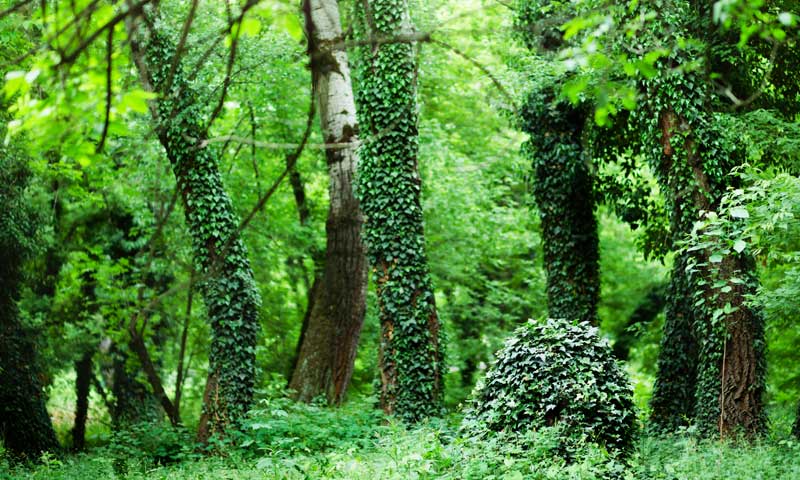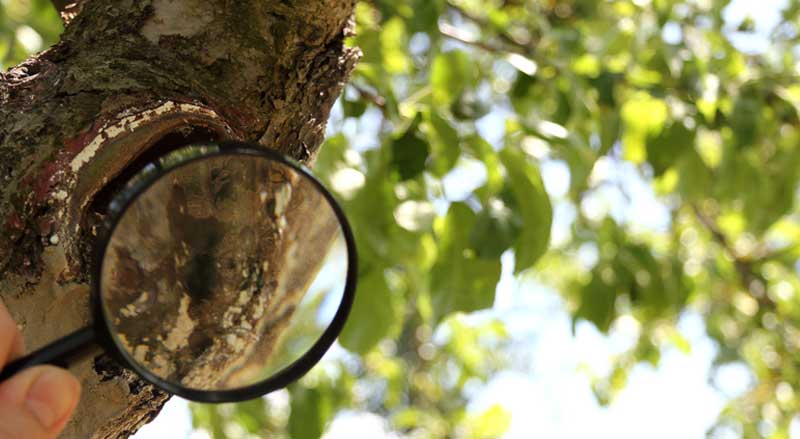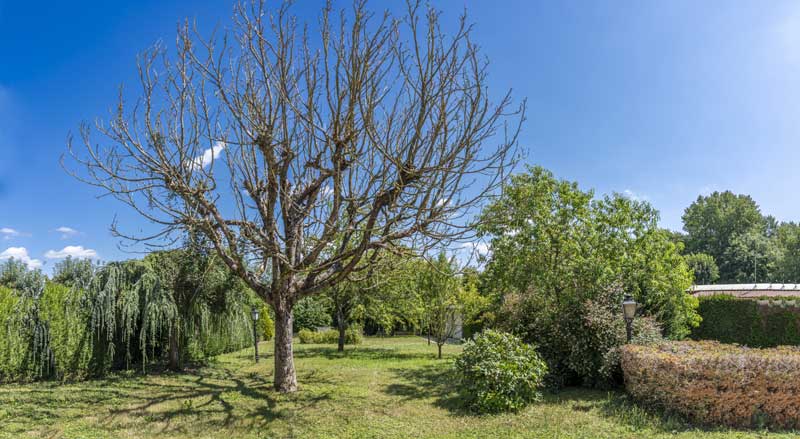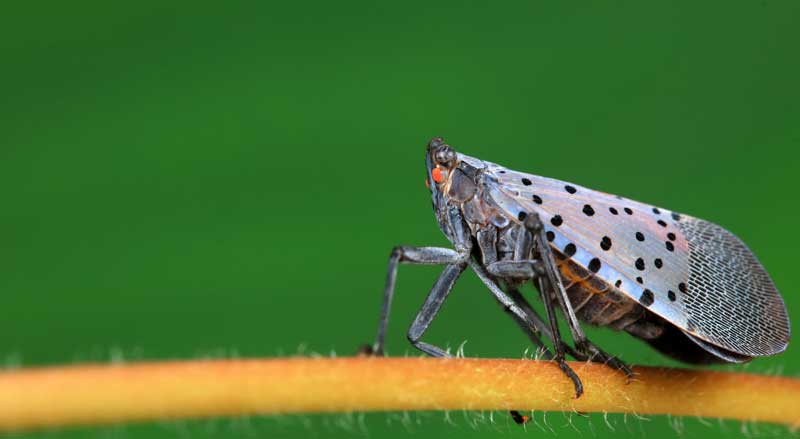Unfortunately, there are vines that kill trees in NJ.
It’s fun to visit your alma mater and once again see the ivy-covered walls of your old dorm. It stirs memories and inspires a sense of history.
But what if you see an ivy-covered tree in your yard?
If you don’t stop their growth to remove those killer vines, your valuable tree may soon become a memory, too.
Do All Vines Kill Trees?
In a word, yes. Some just do it faster than others.
Vines Endanger Tree Conservation
Given enough time, all vines will eventually kill their hosts. And if you’re concerned about tree conservation, it’s important to understand this danger.
When small vines grow near your tree roots, it’s not an immediate problem.
But if you see a tree overrun with vines, you should act immediately.

How Vines Start
Vines get started in different ways.
A bird can nest in a tree and carry over berries from other vines.
Other times, vines start as nearby shrubs or groundcover and a seed falls under a tree. All that seed needs to do is attach to the trunk and start growing.
And don’t be fooled by those sweet baby vines on your tree.
They look pretty—at first. But you may realize too late that those harmless-looking vines are killing your prized tree.
Similarly, watch out for vines growing near your trees. They can quickly grow to the base of the tree and start their dangerous climb.
Don’t give vines a chance to get started. Cut them back right away before they even reach your tree.
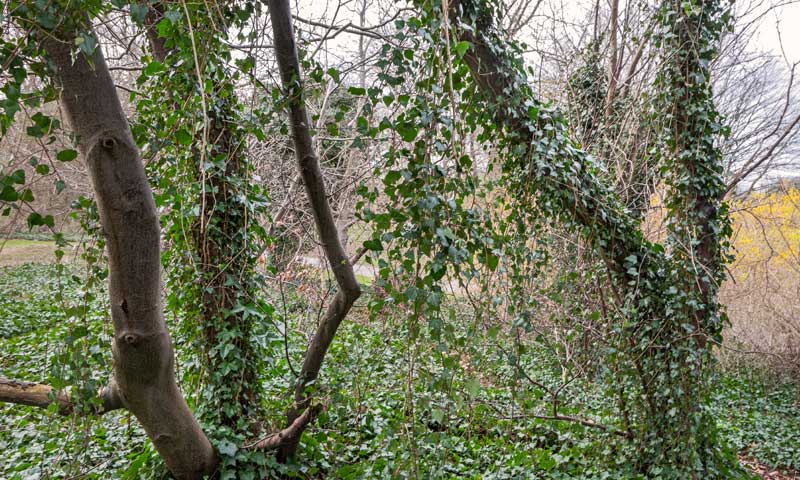
How Vines Kill Trees
Vines climb trees using:
- Aerial roots—roots that grow on the above-ground portion of the vine, and strongly attach to the bark
- Tendrils—string-like flexible stems that grow around supports
- Stem twining—the entire stem climbs totally around a support and will strangle the tree
- Adhesive disks—approximately 3-millimeter diameter disks that tightly attach to bark or masonry
But there simply isn’t a safe way for a vine to coexist with your tree—regardless of how it climbs.
Vines can:
- Keep necessary sunlight from the tree
- Hold moisture against the tree
- Cause structural damage
Vines Steal the Sunlight
When a vine’s leaves overrun a tree’s leaves, they compete for space, air, and sunlight.
And since vines grow faster than trees, it never ends well for the tree.
The tree can’t continue with its normal photosynthesis process. And the tree, or part of the tree, eventually dies.
The vines also compete with the tree for crucial water and nutrients.
Vines Retain Moisture
The aerial roots of vines cause moisture to be trapped in the tree’s bark. This encourages bug infestations, mold, and tree diseases to develop.
Sometimes a vine becomes heavy with moisture or snow and ice. This can cause affected branches to become too heavy and break off.
Structural Damage
Vines around the tree trunk cause problems, as well.
A thick vine covering can form, covering the spreading roots of the tree. These vines, combined with fallen leaves and rain, trap moisture and decay.
The base of the tree becomes the perfect breeding ground for fungus and bacterial diseases.
This can cause unrepairable damage to the trunk or large boughs, and the tree will die.
Thick vine cover will also hide the structural damage it caused. The tree becomes a hidden hazard for people, animals, and property.
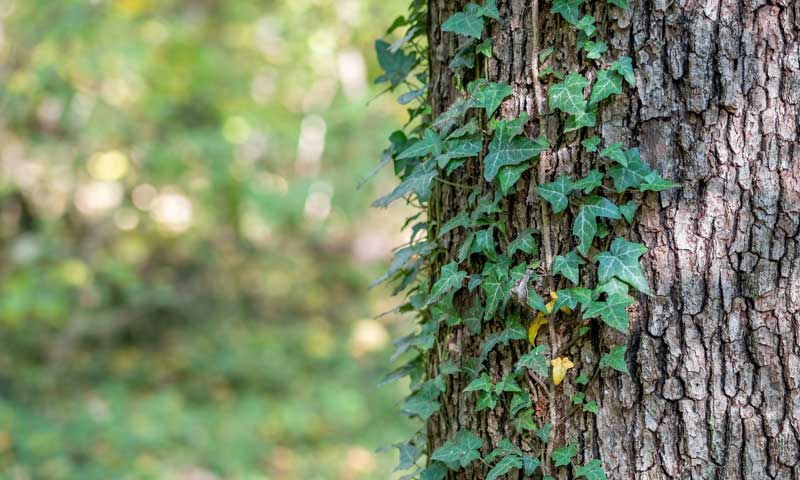
How Long Before a Vine Kills a Tree?
The time it takes for a vine to kill a tree depends on the type of vine and the type of tree.
But unchecked vines will eventually kill a tree.
How to Remove Vines
If you ever tried to remove vines from trees, walls, or in the ground, you already know it’s not as easy as you’d think.
You may even look at vines in a whole different way! They’re not as innocent as they seem!
Vines can have tiny hairs or disks that attach to the bark, making them nearly impossible to remove.
When you remove a vine, be sure not to damage the bark or layers of tree beneath the bark. If you pull on a vine and bark comes off with it, don’t continue.
Wear protective clothing, boots, and gloves. Some vines, like poison ivy, can seriously irritate the skin for days.
Removing Young Vines
Sometimes, you can gently pull younger vines away from the tree bark. Then pull the remaining vine, on the ground, up by its roots.
Use pruning shears to remove smaller vines.
Removing Older Vines
For larger vines, you may need a handsaw or crowbar. Start by cutting off the main part of the vine from its roots.
It’s recommended that you remove vine in 6-foot sections, starting from the bottom of the tree. Continue this process for as high as you can reach.
Be very careful and make sure that you aren’t causing any damage to the tree bark. If you are, stop immediately.
Over the coming months, the remaining vine will die, decompose, and fall off the tree.
However, don’t be surprised if the vines return and you need to repeat the process.
How Do You Keep Vines from Growing Back?
Do this after a rainy day or water the area with a deep watering:
- Pull any vines out of a two-foot area surrounding the base of the tree
- Be sure to pull the vines out by their roots
- Use a rake to pull up stubborn roots
- Cover the area with mulch or another non-vine groundcover
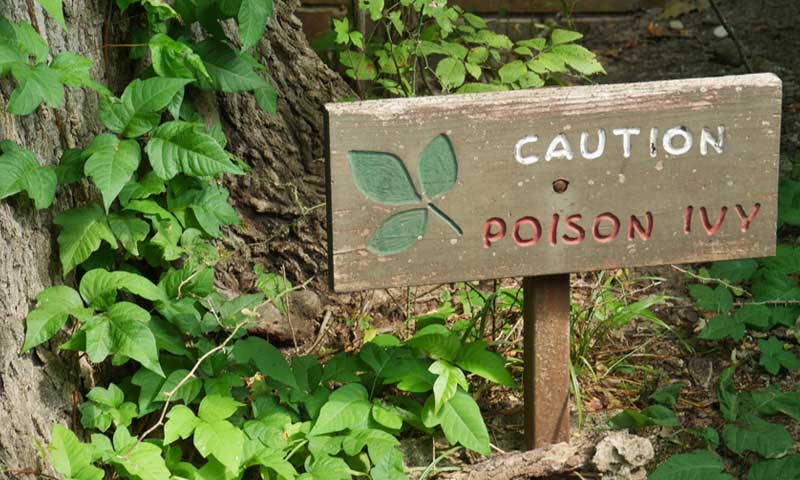
Vines Commonly Found in New Jersey
Vines commonly found in New Jersey include:
- English Ivy—an evergreen, perennial woody vine
- Poison Ivy—a poisonous vine, with three leaves on each stem, easily identified in winter by this old scout saying, “Hairy rope, don’t be a dope!”
- American Wisteria—a circling, girdling vine that wraps around trees and strangles
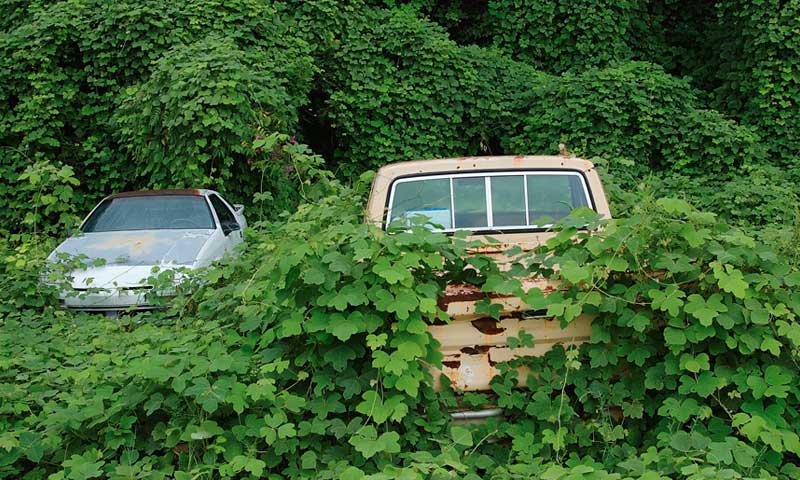
Be on the lookout for kudzu—a very dangerous, extremely rapidly spreading invasive vine, recently found in NJ. This vine is nicknamed “the vine that ate the South” because of the extreme damage it caused all over the Southeast.
If you need expert, thorough, vine removal, contact us at Trees Unlimited.

